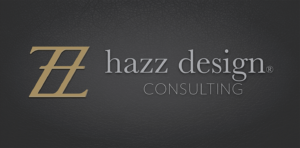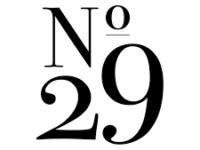Hi Everyone,
I have a very special treat for you! I was lucky enough to be able to interview Tracy Hazzard of Hazz Design Consulting, the leading design consulting firm on 3-D Printing. Please read what she had to say and take her advice in consideration when making future business decisions! I’m really excited about sharing this one! Here we go:

Let’s start off by telling everyone who you are, what business you represent, and where you are located…
Tracy Hazzard – Hazz Design Consulting, Inc. – http://hazzdesign.com
Based in Orange County, California, product designers and design experts Tracy Hazzard and Tom Hazzard of Hazz Design Consulting have collectively designed and developed 250+ products generating almost $1 Billion in revenue for their retail clients. They hold over 37 utility and design patents with an unprecedented 86% commercialization rate – double the USPTO-reported national average. Their entrepreneurial experiences are taught in a Harvard Business Review course in 26 universities around the world. Tom and Tracy are hosts of the 3D Printing Podcast WTFFF?! ranked #1 on iTunes with over 45,000 listeners monthly.
Tom and Tracy are graduates of Rhode Island School of Design with degrees in Industrial Design and Textile Design respectively. They have worked as ghost designers behind such well-know brands as Martha Stewart Living, X-Rocker and Bayside Furnishings. Tracy worked directly for design-leading companies like Milliken and Herman Miller. Tom built and managed design teams for three ready-to-assemble furniture companies. Both Tracy and Tom have had products in all major retailers, wholesale clubs, electronics boutiques and office super stores. Their best-selling mesh office chair has been in Costco for over 5 years straight. Besides being featured on numerous podcasts and publications like Entrepreneur, Forbes, Wired, Fortune Small Business, ThriveGlobal, and CNN Money, Tracy pens a regular featured Inc. column on innovation.
How did you get started selling on Amazon & in brick-and-mortar stores? What was your process?
We have been ghost-designing and developing products for clients to sell into mass-market retail (Costco, Target, Staples…) for over 20 years. In 2012 some of that shifted to Amazon with a client and we saw how a big brand did not take advantage of all the features Amazon offers sellers and also discounted the importance of Amazon sales. While a product does 10s of thousands in store it might do only hundreds or thousands on-line, so it was not a priority for them. So, we began expanding our services to support smaller on-line brands, growing inventive or start-up brands and some of our own products to test out. We decided not to go the “take a course from a guru” route because most all I have come across make less money selling product and more money selling courses and memberships. This calls to question whether or not Amazon selling is really worth it or their method is repeatable. Instead, we chose to hire experts in listings, rankings, getting reviews… all separate and all independent so we could experiment with what works.
What sparked your interest in product creation and offering that/those product(s) for sale?
It is our core business and in our blood, we are product designers and inventors.
How did you end up getting started in product creation? Specifically, how did you design the product, get a prototype made, and get a supplier to make it?
We start from extensive product research, consumer behavior and studying massive amounts of stats – sales, buying trends, etc. We have our own proprietary capture method we use for top clients that captures trend over time. Then we design into the gap – the open area where competitors aren’t doing something but consumers would be interested in having. Of course we test assumption that too. We make our own 3D Print prototypes or use our exclusive China team to have samples made, find factories, get quote, etc. Everything we do is hands-on and builds a lasting relationship with the right factory/supplier.
Where does your inspiration come from when creating a product? Do you research items or markets and make them better? Or do you think of ideas and then just roll with them?
Sometimes it comes from a client’s request to find an opportunity in a particular category. Sometimes, our research shows glaring holes that we cannot ignore. Mostly, we have just been doing this so long that identifying the good ideas from the bad is relatively straightforward. We come up with a constant stream of ideas but very quickly discard or table a lot of ideas. Knowing what not to do – what will take too long or too much money or won’t cost out – makes it so we can be so prolific and successful.
What strategies did you implement to help scale your business to where you are now? What were your 2016 numbers (If you don’t mind me asking)?
Of our original designs, one single product does over $20 million per year. Another did $3 million in the 4th quarter alone. On average though most of our client’s products plug along doing between $500K to $1.2M.Our strategies for scaling have been simply to follow our process and not to deviate. Not to get attached to or fall in love with our product. Diversify quickly and constantly introduce new products so you are not waiting until you are in decline to get started.
And the classic, any final insight or recommendations? Things you wished that you knew when you were first starting out? Or even after you’d been doing it a while?
Things change rapidly. If you are only following the algorithms and the hacks and not really developing a great product that people buy, use again and again, and recommend to their friends, then you are going to give this up quickly. Profit margins for most sellers doing wholesale or these kinds of white-labeling only tends to average around 10%. Ours are around 30-55% depending on the product category. If you can do into it with more initial capital then you can tap into higher priced and higher profit margin products. Our best-selling and most profitable products retail between $40 to 100.Those that DIY it also tend to have less repeatable success. You need experts and a team to help. Just make sure that you vet them well, that they have proven documented success and that they can repeat that success again and again. Do not work with anyone who says “they can do it” make sure they have done it before.


